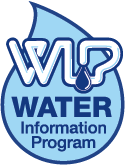WIP Partner Spotlight: The Nature Conservancy
Water Information Partner Spotlight: The Nature Conservancy
Q&A with Mickey O’Hara, Freshwater Project Director, Southwest Colorado
The Water Information Program (WIP) spoke with Mickey O’Hara, Freshwater Project Director at The Nature Conservancy, which has been a WIP partner since 2016.

Q: For those who aren’t familiar with The Nature Conservancy, tell us a bit more about your organization:
O’Hara: The mission of The Nature Conservancy is to conserve the lands and waters on which all life depends. Our vision is a world where the diversity of life thrives and people act to conserve nature for its own sake and its ability to fulfill our needs and enrich our lives. The Nature Conservancy has a long history of protecting lands, rivers, lakes and oceans through projects on the ground. We also collaborate with partner organizations in the field and with governments and other influencers to inform policy decisions and direct public funding to further our mission. In southwest Colorado, we partner with NGOs, governments, individuals, and other entities to develop and implement collaborative conservation projects, primarily focused on water. Over the past 30 years, projects have included land protection to preserve unique riparian plants, watershed-scale invasive species management, watershed-scale planning efforts, streamflow restoration projects, and more.
Q: You aren’t new to water but are new to the southwest Colorado water community, is that right? Tell us a bit about yourself.
O’Hara: I’ve been working in the water world since 2014, and prior to joining The Nature Conservancy in southwest Colorado, I spent over five years at another great nonprofit – Colorado Water Trust. I completed my engineering studies at Colorado School of Mines and was drawn slowly into the world of river conservation. I’m grateful to have the opportunity to support increased flexibility and resilience in Colorado’s water use systems during such an important time in the West. I’ve worked and lived on several tributaries of the Colorado River since growing up near the Yampa River in northwest Colorado, and I’m now planted in Ridgway with my partner and our two dogs.
Q: What are the biggest water challenges facing southwest Colorado?
O’Hara: From my perspective, the most pressing water challenges in southwest Colorado stem from aridification and changes to hydrology. These challenges are broad, from forest health issues to chronically low streamflow and recurring water shortages for consumptive water users. That said, I’m encouraged to see the level of collaboration happening in the Southwest Basins to address these challenges. The stakeholder planning efforts that just wrapped up in the Upper San Juan and the San Miguel basins are both great examples (among many), and I’m hopeful that the multi-benefit projects identified through these efforts and other planning efforts will help rivers and people adapt faster as we all work to build resilience for the future.
Q: What are three aspects of southwest Colorado’s watersheds that you find intriguing?
O’Hara: You can visit high alpine lakes, rare riparian plant and native fish communities, and red rock canyons easily in one watershed in a day. Speaking of native fish, many of the southwest’s streams support some of my favorite warmwater species in their lower elevation reaches – including the flannelmouth sucker, bluehead sucker, and roundtail chub. The management of water resources is so different from basin to basin, and it’s been helpful to learn about local and regional priorities and challenges over the past six months.
Q: Why does The Nature Conservancy value water education?
O’Hara: The Nature Conservancy believes in creating a world where both people and nature thrive. I’m biased, but I think the key to people and nature thriving in Colorado is stewardship of our water resources – and that starts with education. Agricultural producers, recreationists, native species, citizens, and local economies can all benefit from better stewardship of what we have. Water education is a key tool to inspire all Coloradoans, including our next generation of water leaders, to get more involved.
Q: What question do you wish we had asked you?
O’Hara: “Are The Nature Conservancy’s preserves on the San Miguel River open to the public?” The answer is yes – and I highly encourage a visit next time you’re in the area if you’re interested in learning more about unique riparian plant communities. More information about all of The Nature Conservancy’s preserves across the region can be found here.
